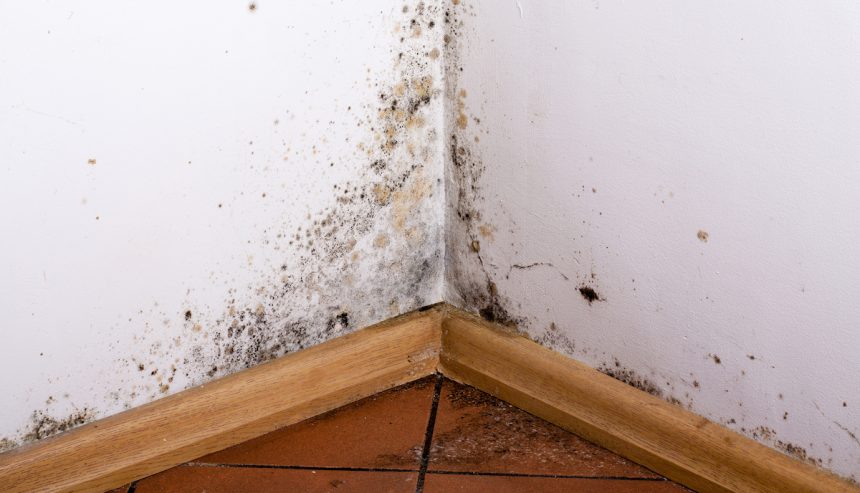Table of Contents
Mold after water damage is one of the most common and costly issues homeowners face. Whether it stems from a burst pipe, flooding, or a leaky roof, the moisture left behind can become a breeding ground for mold in as little as 24-48 hours. Acting fast is not just recommended—it’s essential.
In this guide, we’ll walk you through a practical, easy-to-follow process to prevent mold after water damage and help you protect your property and your health.
Step 1: Act Quickly After the Water Event
Timing is everything. As soon as you notice water damage, start removing excess water and moisture immediately. The longer it sits, the more likely mold will form.
Use mops, towels, and wet/dry vacuums to remove standing water. If it’s a large area or severe flooding, call a professional water damage restoration service immediately.
Step 2: Improve Airflow and Ventilation
Air movement is a key factor in drying out damp areas. Open windows, turn on ceiling fans, and use dehumidifiers to speed up the drying process. If weather permits, creating cross-ventilation by opening windows on opposite sides of the house can help even more.
Poor ventilation allows humidity to linger—a top contributor to mold after water damage.
Step 3: Remove Wet Items and Materials
Anything porous, like carpets, insulation, upholstered furniture, and drywall, can trap moisture. Remove these materials if they are saturated and can’t be dried thoroughly within 48 hours.
Store damaged items in a dry place to assess what can be salvaged and what should be disposed of. This also prevents spreading mold spores to other areas.
Step 4: Disinfect Surfaces to Kill Mold Spores
Even if mold isn’t visible yet, it’s still wise to clean all affected areas with antimicrobial cleaners. Mold spores are microscopic and can begin forming in hidden places long before you see them.
Scrub hard surfaces like walls, floors, and wood furniture with a solution of water and disinfectant or a mold-killing cleaner to stop spores in their tracks.
Step 5: Use a Dehumidifier to Control Moisture
A dehumidifier is one of the best tools for controlling indoor humidity after water damage. Set it to maintain indoor humidity between 30-50% to keep the air dry and mold-resistant.
This helps remove any lingering moisture from the air, carpets, and walls—prime areas for mold after water damage.
Step 6: Inspect Hidden and High-Risk Areas
Don’t assume you’re in the clear just because everything looks dry. Mold after water damage often forms behind walls, under floors, or in insulation—places you can’t see easily.
Check:
- Behind baseboards
- Inside cabinets
- Under carpets and padding
- Around window frames
If you’re unsure or notice a musty smell, call a professional for a moisture inspection.
Step 7: Call a Water Damage Restoration Expert
Some water damage situations are simply too big to handle alone. If you’re dealing with contaminated water (like sewage) or can’t fully dry the space within 24-48 hours, professional help is a must.
Certified technicians, like those at PuroClean of Bellflower, have advanced tools to detect hidden moisture, remove water quickly, and prevent mold before it takes hold.
Why Preventing Mold After Water Damage Matters
- Health Risks: Mold exposure can cause respiratory issues, allergies, and asthma.
- Property Damage: Mold deteriorates drywall, wood, and insulation.
- Financial Costs: Mold remediation is far more expensive than prevention.
- Insurance Gaps: Many homeowners insurance policies don’t cover mold if caused by neglect.
Preventing mold after water damage is not only smart but necessary for long-term peace of mind.
FAQs About Mold After Water Damage
Q: How quickly does mold grow after water damage?
A: Mold can start growing within 24 to 48 hours if moisture is not properly removed.
Q: Can I clean mold myself after water damage?
A: You can clean small patches on non-porous surfaces, but larger outbreaks or hidden mold require professional treatment.
Q: What are the signs of mold after water damage?
A: Musty odors, visible spots on walls or ceilings, and allergic reactions are common signs.
Q: Will mold go away once it dries out?
A: No. Even dry mold can release spores. It must be physically removed or killed with proper cleaning agents.
Q: Is it safe to stay in a house with mold?
A: It’s risky, especially for individuals with respiratory conditions, allergies, or weakened immune systems.
Don’t Wait—Call PuroClean of Bellflower for Help
If you suspect or want to prevent mold after water damage, don’t gamble with your home’s safety. The expert team at PuroClean of Bellflower is ready to help you clean, restore, and protect your property with fast, professional water and mold damage restoration services.
Call us today at (562) 356-8500 to schedule an inspection or emergency service. Don’t let mold take over, let us restore your peace of mind.
Click Google Map below to view our Google Business Profile





 PuroClean of Bellflower
PuroClean of Bellflower